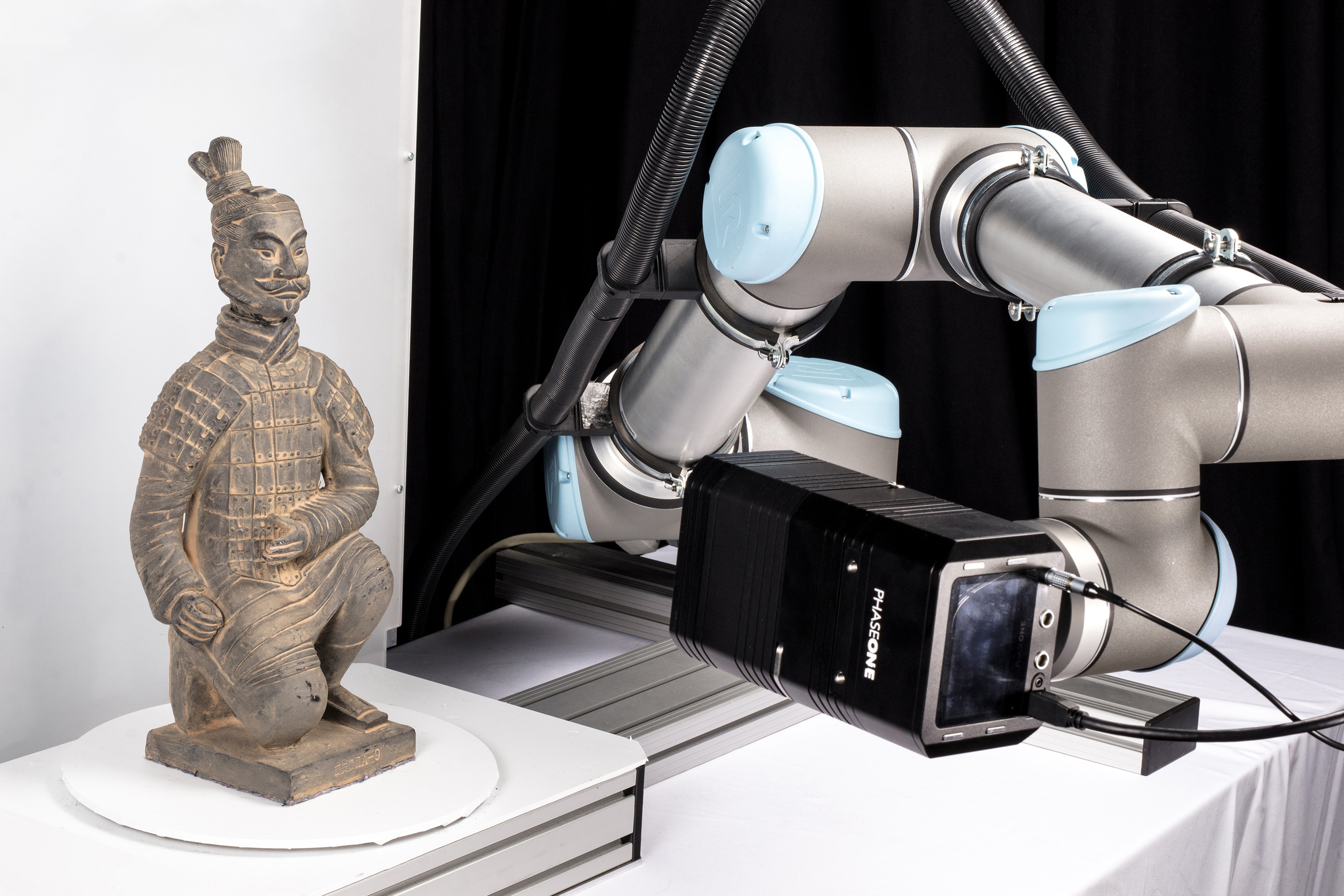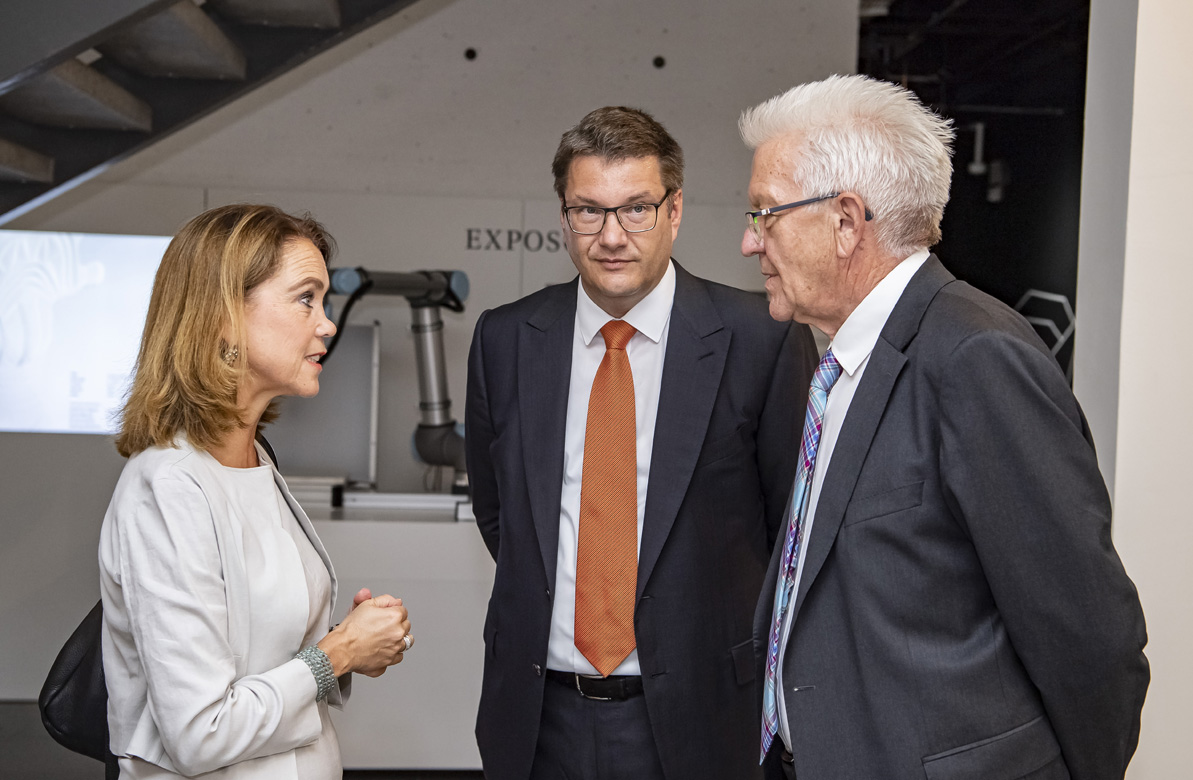Exhibits archived by visitors
A new exposition concept lets visitors to the State Museum of Baden hold the exhibits in their own hands and digitize them with the help of Fraunhofer IGD. The trip becomes not just memorable, it also actively contributes to the museum’s digital archive.

(Karlsruhe/Darmstadt) “Archeology in Baden - Expotheque1” is the name of the revolutionary exposition that has been residing at the State Museum of Baden since July 13. Revolutionary because visitors become users: For the first time ever, the historical artifacts have left their glass display cases and are being stored in drawers that beg visitors to rummage through and discover their contents. Those who sign up ahead of time are even allowed to hold valuable cultural treasures from 650,000 BCE to the 8th century CE in their own hands -- gloves and trained explainers make sure the objects remain undamaged, of course. But it does not stop at this once-in-a-lifetime inspection of the items‘ authenticity: The later stations create a wholly new visitor experience using state-of-the-art technology.
Visitors can professionally digitize the exhibits
For the next step, the cultural heirlooms on hand are digitized in 3D by the users. The CultArm3D-P robotic arm developed by Fraunhofer IGD scans the objects in three dimensions and then transfers the virtual clone, including color and texture, into the database of the State Museum of Baden. This digital catalog will keep the scanned museum inventory accessible to all users going into the future. The process is an exciting thing to watch: The fully autonomous arm circles around the object, which is on a rotating glass table for optimal positioning and also so the bottom can be scanned. The CultArm3D-P does not require any practice runs and scans each object precisely -- no need to clean up the digital data afterward, the virtual model is available right away for inclusion in the catalog. This intuitive and easy-to-use 3D digitizing station was made possible with funding from the Klaus Tschira Foundation.
Virtual museums - more than just baubles
The Expotheque serves as a testing ground for the future master plan for the State Museum of Baden. Not only in Karlsruhe are large stores kept far away from visitors in archives, museums around the world have just a small fraction of their exhibits on display. Even now, 3D digitizing is helping provide the entire inventory in a digital catalog. The idea of including a digitization station in the “Archeology in Baden” exposition was an early one in the planning process: “Feeling them yourself opens an emotional door to the objects,” said Carolin Freitag, project manager and coordinator of the “Archeology in Baden” exposition. “Digitizing the object they just held in their own hands will give visitors a memorable experience and vividly explain how a digital archive works.” The digital relics will not only benefit the people at the museum: “The idea of a digital catalog is to let everyone look at the exhibits, whether at home or even on the go,” explained Freitag.
Even the minister-president of Baden-Württemberg, Winfried Kretschmann, has been won over by the idea: On 18 July, he visited Karlsruhe Palace to explore the Expotheque, which includes other highlights such as a VR tour through different historical scenarios in addition to the digitization station. For more information on prices and hours, visit

About CultLab3D
The CultArm3D-P is part of CultLab3D, a project focusing on the development of innovative 3D scanning technologies that are readily combinable with each other. They are designed for objects of different sizes and automatically scan geometry, texture and optical material properties for a faithful reproduction down to the micrometer.
Their range of applications comprises solutions for industry, construction, healthcare and creative industries. 3D data can be used for quality assurance, reconstruction or reverse engineering. They can also support the digital documentation, presentation and preservation of cultural assets. CultLab3D contains years of experience in the faithful digitization of artifacts and building-like structures.
CultLab3D is the research lab of the Cultural Heritage Digitization Competence Center at the Fraunhofer Institute for Computer Graphics Research IGD. With funding from the Fraunhofer-Gesellschaft and the Federal Ministry for Economic Affairs and Energy, the world’s first 3D scanning pipeline for highly efficient mass 3D digitization was produced. The 3D technologies developed in this project are being continuously optimized for a broad range of applications, from capture to visualization, to reproduction through 3D printing.
 Fraunhofer Institute for Computer Graphics Research IGD
Fraunhofer Institute for Computer Graphics Research IGD